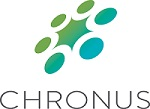ATD Blog
Using ERGs to Build Empathy and Advancement for Your Employees
Tue Aug 03 2021

The need for social connection amongst employees to amplify voices, concerns, and shared experiences isn’t a product of the recent pandemic. Likewise, employee resource groups (ERGs) aren’t new to the workplace. But the last year has shown the renewed importance and necessity of these types of employee programs to build connection, enable empathy, and promote growth.
What Are ERGs?
ERGs go by many names, but most focus on the same goal—bringing groups of employees together based on shared characteristics or life experiences. Originating in the 1960s with black Xerox employees, these forums were used to vocalize experiences and reactions to the racial tensions of the age. The idea of employee groups has continued to evolve, leading to the formalized versions of ERGs many organizations know today. Some companies might also have business resource groups (BRGs) or business resource networks (BRNs).
What Is the Purpose of ERGs?
ERGs are employee-led, voluntary forums that provide employees with support, career development, and network creation. They are often created around shared characteristics or personal traits like ERGs for women employees, AAPI employees, LGBTQIA employees, veteran employees, and more. In recent years, ERGs have expanded to include interest-based groups like working parents, the environmentally conscious, and mental health advocates.
ERGs benefit employees by allowing them to vocalize their feelings and experiences while building trust. They can also improve employee engagement and make employees feel valued in a company, especially those underrepresented. For organizations, ERGs provide the leadership insight into what employees care about, promote problem solving, and innovate and illuminate where a company might be falling short in inclusion efforts.
Corey Anthony, chief diversity and development officer at AT&T, put it simply in an interview with DiversityInc Best Practices, “You get a chance to hear directly from more people—to interact with a wide range of employees in the context of D&I. Without ERGs, it would be a lot more challenging to make that happen. You put all that together, and yes, ERGs are core to who AT&T is as a company.”
ERGs and the Hybrid Workplace
The pandemic has shown us the importance of social connection, whether in person or remote. ERGs have provided support and connection during a time of isolation. Companies have used ERGs to break down barriers and create empathetic relationships and mental health check-ins. As people make sense of the post-pandemic workplace, the style of work is changing once again, but the need for these social supports won’t be.
Whether it’s promoting productive dialogue around return to work plans or supporting personal and professional adjustments to new or changing working styles, ERGs have been crucial to building empathetic responses and programming for employees. Over the last year (and beyond) of racial unrest, ERGs have enabled important conversations around race, belonging, and allyship in the workplace. They’ve provided safe spaces for honest, overdue conversations.
Three Elements of Impactful ERGs
To continue or expand the important work ERGs are doing, there are three components HR and business leaders should consider.
Mentoring
Infusing ERGs with mentoring is a vital component to success. Mentoring’s proven ability to improve the representation of underrepresented employees in companies makes it a key partner to ERGs. The existing setup of ERGs makes it easy to implement mentoring circles, group mentoring or career mentoring formats in order to expand networks, build skill development, and like Comcast found in their Employee Resource Group Mentorship Program, “…create opportunities for professional success throughout \[an\] employee base.”
Introducing mentoring to ERGs builds accountability and can facilitate one-to-one or one-to-many conversations that focus on development for the participants. For employees of color, this can be especially important. In a survey of US law firm employees, 62 percent of black female employees said the lack of an influential mentor was a major barrier to advancement. The mere presence of mentorship helps create a space of trust and rapport amongst employees while providing access to new opportunities and networks.
Connection to Business Impact
ERG goals must be connected to business objectives to make sure ERGs are part of organizational priorities. If not, the support of, focus on, and resources for these types of programs fall by the wayside.
Goals of the ERGs can relate to the priorities such as:
Retention and engagement
Diverse representation in leadership and management
Employee upskilling or reskilling
This is a small list, but defining metrics of success will help in showcasing the impact and reaffirming the need for or expansion of ERGs within an organization. Connection to business impact will also drive the allocation of resources, which for a voluntary program could mean more people, tools, or budget to help facilitate.
Recognition and Support
In a Great Places to Work survey, 44 percent of ERG member comments implied that their work goes unrecognized and lacks support and engagement from company leaders. This support can come in the form of recognition, senior leadership participation, or meaningful budget. Recognizing the voluntary work ERGs do in public ways will show employees that ERGs are a valued part of the workforce. This promotion will also help to grow the number of participants and make the programs more representative of the employee experience. This will help to improve working conditions and experiences for all, enabling underrepresented groups to feel connected and supported.
The hybrid workplace is growing and changing rapidly. Employees expect a new social contract with their companies, or they’ll begin to look elsewhere for this value and consideration. Organizations that are going to keep up are engaging in new ideas, evolving existing programs, and building sustainable spaces for the belonging and inclusion of all employees.
You've Reached ATD Member-only Content
Become an ATD member to continue
Already a member?Sign In

